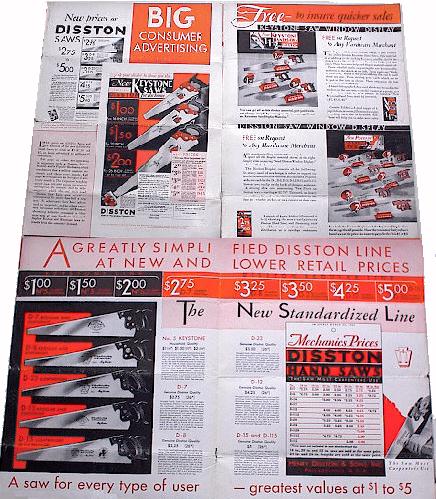|
In response to the Great Depression's stalled economy,
Disston refocussed its marketing strategy in 1931 by introducing a "new standardized line" with a "greatly simplified line [of saws] at new and lower retail prices."
Just three year earlier the company had already taken measures to simplify its product line and eliminated slow-moving saws. There had been a duplication of features in saws that were very similar, such as the No. 7, No. 8, and No. 76; or D-8 and D-100; or No. 12 and No. 9. The series of D-20, D-21, D-22, and D-23 was cut to D-23. In the ten years between 1921-31, the Disston handsaw line shrunk from about 18 models to seven, not counting regular and lightweight or ship point varieties of most models.
|

|

